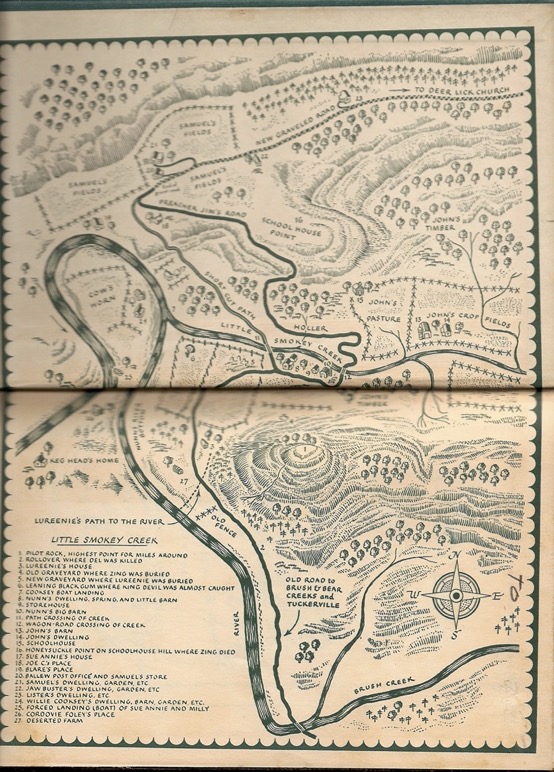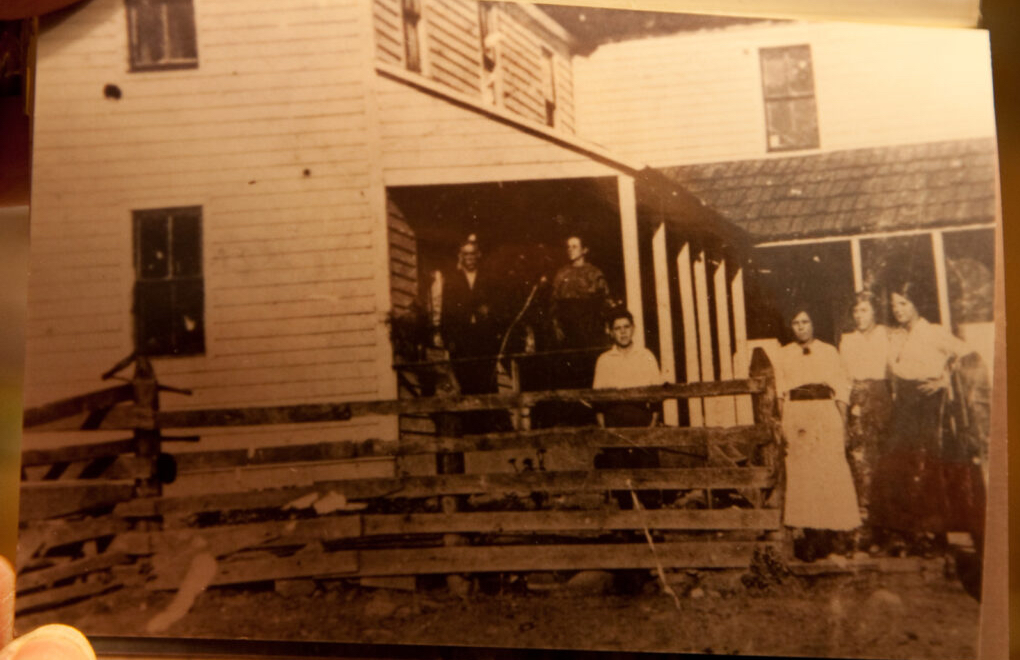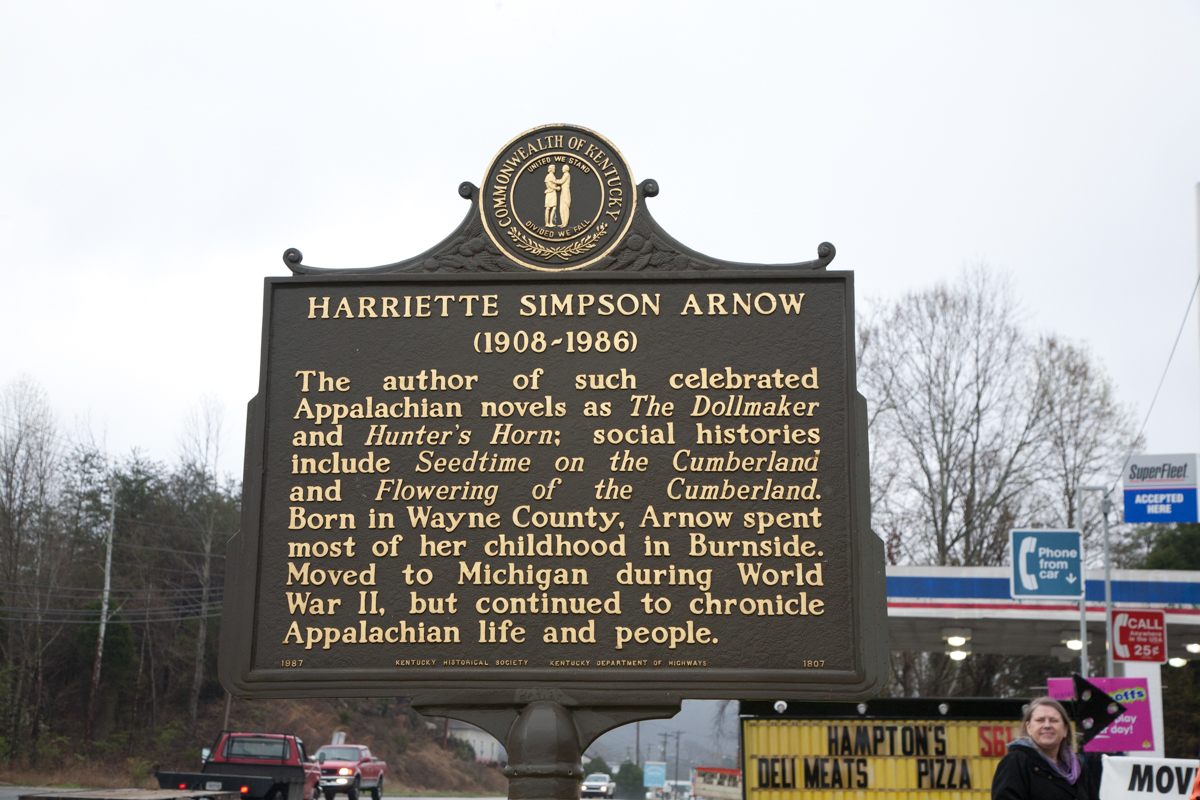A subsistence farm in the 1930s provided the backdrop for one of Harriette Arnow’s distinguished Kentucky novels. Today the remote, hilly Southeastern Kentucky land has grown into a wilderness.
The Land of Hunter’s Horn and The Dollmaker
Harriette and Harold Arnow were writers who met working on the Works Progress Administration Writer’s Project in Cincinnati. They dreamed of getting through the Depression as subsistence farmers in Harriette’s home area of Southeastern Kentucky, writing in their spare time. What dreamers.
They bought 150 acres in the hills of Pulaski County in 1939 and purchased chickens, a pig and a cow. The pictures above show the farmhouse as it was in the late 1800s and early 1900s. By the time Harold and Harriette owned it, the place was in rough condition. Now it is a ruin.
Like many others in the mountain South, they found farming arduous and precarious. And like many of their neighbors, in the run up to World War II, they moved to where the jobs were in Detroit.
Harold went back to being a newspaperman covering the courts at the Detroit News. They lived in public housing for a time, raising their two children, Marcella and Tom. Later they moved to a small farm on Nixon Road in Ann Arbor.
Inspiration born of hardship
Harriette wrote histories and novels set in Kentucky and Michigan. The novels Hunter’s Horn and The Dollmaker, published in 1949 and 1954, are her most well known. Novelist Joyce Carol Oates called Hunter’s Horn “an American masterpiece,” comparing it to Moby Dick because of one man’s destructive obsession with a predator, in this case, a red fox.
The setting of Hunter’s Horn, as seen in the first edition’s inside covers–was this farm–with the place names changed. You can see the real names in the 1968 survey map of the land. Harriette’s first novel, Mountain Path, about being a schoolteacher in a one-room schoolhouse, was set on adjacent land.


After the Arnows moved to Michigan, the farm remained uninhabited, the tiny community of Keno depopulated. Today the farm has grown into a remote forest. You have to cross Indian Creek to get to most of the property. It is wild and beautiful.












Scenes from the old Arnow farm, now a forest surrounded on three sides by the Daniel Boone National Forest and the Cumberland River. For many more photos of the land, see https://patarnow.zenfolio.com/p674331584
For pictures of Harriette and Harold Arnow and family and friends who have encouraged protection of the land, see https://patarnow.zenfolio.com/p197008786
After Harold died in 1985 and Harriette in 1986, the farm went to Marcella. When she died in England in 2010, the land came to me—Harold and Harriette’s niece. Marcella hoped to preserve the land wisely as did her parents. I was able to do that under the US Department of Agriculture’s Healthy Forests Reserve Program. The land is now under a conservation easement. It can never be mined, drilled or developed. It is a wild and beautiful forest today. Here is the USDA’s description of the program and this land.












The land is surrounded on three sides by the Daniel Boone National Forest and Lake Cumberland (an Army Corps of Engineers project constructed in the 1940s–and that took some of the farm via eminent domain, which my aunt and uncle protested furiously). A developer put in a gated community across the gravel road where the old farm begins.
For more about Harriette Arnow’s history, see this oral history/interview with Harriette Arnow by Mimi Conway: https://docsouth.unc.edu/sohp/G-0006/G-0006.html
Many thanks to Wanda Worley, who is one of the descendants of people who owned the land before the Arnows did. She visits and worries about and cares for the land–and for me. And thanks to Toby Wilkins, who actually pulled down the house in April 2011, when it was dangerously tilting. Much appreciation to the late Tom Arnow, who sold his share of the land to Marcella and supported my preservation efforts most graciously.
For more information e-mail Pat Arnow. Photos Pat Arnow, © 2022. Please inquire before using online, in print or for any other media. High-resolution images are available.






